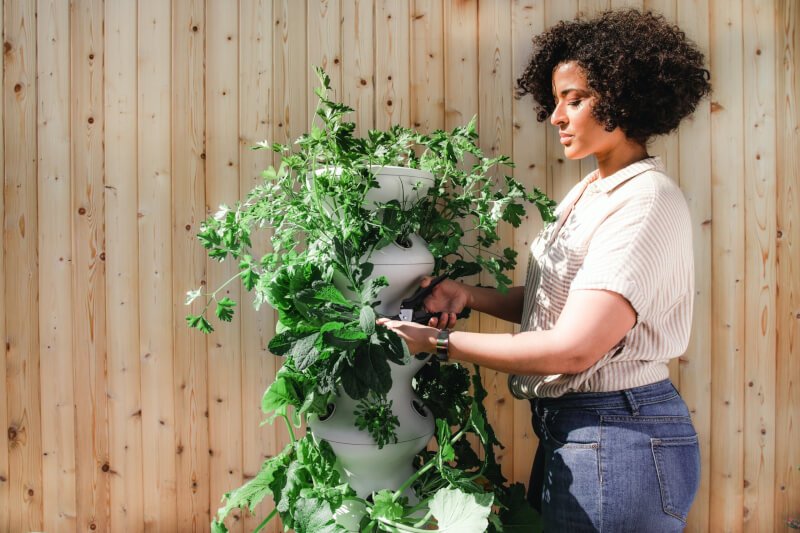So, you’re looking to grow your own vegetable garden and experience the joy of harvesting fresh produce right from your backyard? Well, look no further! In this article, we will explore the best ways to make your DIY vegetable garden thrive, from selecting the right location and preparing the soil to choosing the perfect vegetables for your region and maintaining their health. Whether you’re a seasoned gardener or just starting out, these tips and tricks are sure to help you cultivate a successful and bountiful garden that will leave you feeling proud and satisfied. So grab your gardening gloves and get ready to dig in!
Choosing the Right Location
Consider the Sun Exposure
When choosing the location for your vegetable garden, it’s important to consider the amount of sun exposure it will receive. Most vegetables require at least 6 hours of direct sunlight per day to thrive. Take note of any trees, buildings, or other structures that may cast shade on your garden and choose a spot that gets the most sun throughout the day. If you live in a hot climate, you may want to provide some shade during the hottest part of the day to prevent your plants from wilting.
Evaluate the Soil Quality
The quality of your soil plays a crucial role in the success of your vegetable garden. Before planting, it’s important to evaluate the soil to determine if it’s suitable for growing vegetables. Take a sample of your soil and have it tested for nutrients, pH levels, and texture. This will give you valuable information on what adjustments need to be made to ensure that your plants have the ideal growing conditions. Additionally, consider the drainage of the soil. Vegetables generally prefer well-draining soil to prevent waterlogged roots.
Ensure Drainage
Proper drainage is essential for the health and development of your plants. If the soil becomes too saturated with water, it can lead to root rot and other diseases. To ensure good drainage, consider the natural slope of your garden and avoid areas prone to water pooling. You can also create raised beds or incorporate organic matter into the soil to improve drainage. It’s important to strike a balance between providing enough water to your plants without allowing excess water to accumulate.
Assess Accessibility
When planning the location of your vegetable garden, consider its proximity to your home. You’ll want your garden to be easily accessible, especially when it comes to regular maintenance tasks like watering, weeding, and harvesting. Having your garden within a convenient distance will make it more likely for you to tend to it regularly and keep it in its best shape. Additionally, consider factors such as the availability of water sources and your ability to transport tools and supplies to the garden area.
Planning Your Garden Layout
Determine the Garden Size
Before diving into your vegetable garden, it’s important to determine the size that works best for your needs and available space. Consider how much produce you and your family will consume, as well as the amount of time and effort you’re willing to commit to gardening. If you’re just starting out, it may be wise to start small and gradually expand as you gain experience. Remember, a well-designed small garden can be just as productive as a large one.
Decide on the Garden Shape
The shape of your garden not only affects its aesthetic appeal but also its functionality. There are several common garden shapes to choose from, such as rectangular, square, circular, or even curved. When deciding on the shape, consider the available space, the layout of your yard, and any existing features you may want the garden to complement or work around. A regular shape, such as rectangular or square, is often easier to maintain and manage.
Consider Companion Planting
Companion planting involves growing different plants together that benefit each other in some way. By strategically pairing compatible plants, you can improve growth, deter pests, and enhance flavor. For example, planting marigolds near your vegetable crops can help deter harmful insects, while herbs like basil and dill can attract pollinators and repel pests. Consider researching and experimenting with companion planting to maximize the health and productivity of your garden.
Utilize Vertical Space
If you have limited ground space, don’t worry! There are plenty of vegetables that can be grown vertically, allowing you to make the most of your available space. Consider using trellises, cages, or stakes to support vining plants like tomatoes, cucumbers, and beans. You can also use hanging baskets or stackable containers for herbs and smaller vegetable varieties. Utilizing vertical space not only saves space but can also create a visually appealing and productive garden.
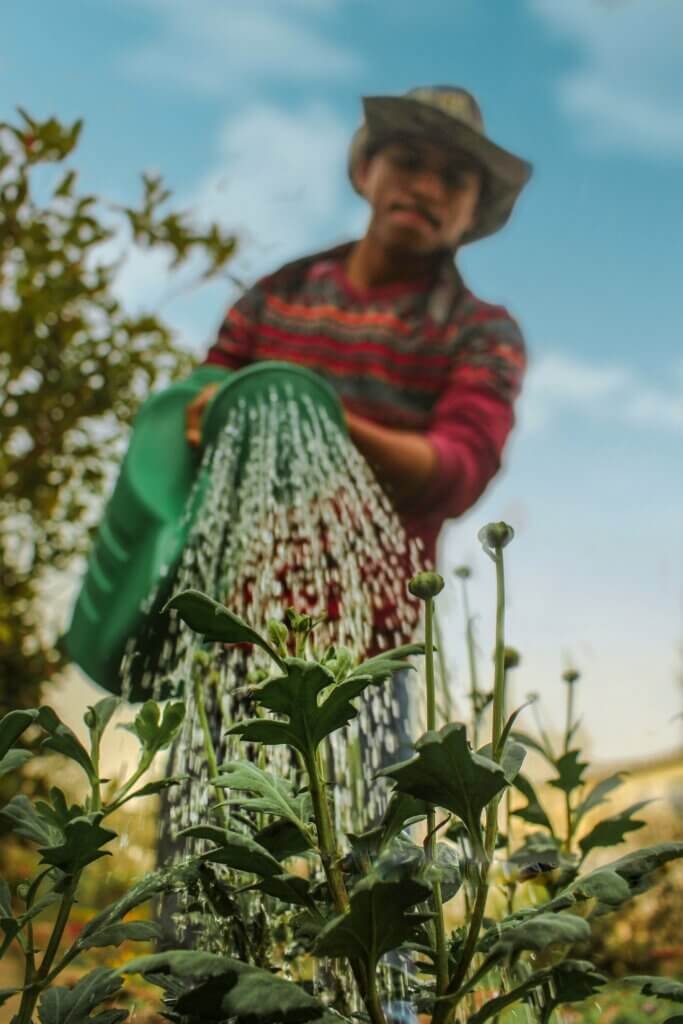
Preparing the Soil
Remove Weeds and Debris
Before you start planting, it’s important to clear your garden area of weeds and debris. Weeds can compete with your vegetables for nutrients and water, so it’s essential to remove them to prevent them from overtaking your garden. Pull them out by hand or use a handheld weeding tool to ensure you remove their roots as well. Additionally, remove any rocks, sticks, or other debris that may hinder the growth of your plants or impede your ability to work the soil.
Amend with Compost or Organic Matter
To provide your vegetables with the necessary nutrients, improve soil structure, and increase moisture retention, it’s important to amend the soil with compost or other organic matter. Compost is a valuable source of organic matter that enriches the soil and promotes healthy plant growth. Spread a layer of compost on top of the soil, then incorporate it by using a garden fork or tiller. This will help improve the soil structure, increase its fertility, and create a favorable environment for root development.
Test Soil pH and Adjust if Necessary
Soil pH, which measures the acidity or alkalinity of the soil, plays a significant role in nutrient availability to your plants. Different vegetables have different pH requirements, so it’s important to test your soil’s pH and adjust it if necessary. Most vegetables prefer a slightly acidic soil with a pH range between 6 and 7. If your soil is too acidic, you can adjust it by adding lime, while sulfur can be used to make the soil more acidic. Soil testing kits or professional soil testing services can help determine your soil’s pH levels and provide recommendations for adjustment.
Loosen and Till the Soil
To create a favorable environment for your vegetable plants, it’s important to loosen and till the soil. This helps break up compacted soil, improves aeration and drainage, and creates a loose texture for root penetration. Use a garden fork, tiller, or even a shovel to loosen the soil to a depth of about 8-12 inches. Avoid over-tilling or working the soil when it is too wet, as this can result in clumpy soil and poor drainage. Aim for a fine, crumbly texture that allows for easy root growth.
Starting Seeds Indoors
Choose Quality Seeds
When starting your vegetable garden from seeds, it’s important to choose high-quality seeds that are known to produce healthy and productive plants. Look for reputable seed companies or nurseries that offer a wide variety of seed options. Consider factors such as the vegetable’s disease resistance, days to maturity, and growth habit when making your selection. Investing in quality seeds will increase the likelihood of successful germination and vigorous growth.
Use Seed Trays or Containers
When starting seeds indoors, it’s important to provide them with the proper conditions for germination and growth. One way to do this is by using seed trays or containers specifically designed for seed starting. These containers provide good drainage, prevent the soil from becoming waterlogged, and allow for easy transplanting when the seedlings are ready. Ensure that your containers are clean and have drainage holes to prevent the accumulation of excess moisture.
Provide Adequate Light and Warmth
Proper lighting and temperature are essential for successful seed germination and healthy seedling growth. Most vegetables require at least 12-16 hours of light per day to thrive. If you’re starting seeds indoors, consider using fluorescent grow lights or LED grow lights to provide the necessary light intensity and spectrum. It’s also important to maintain a warm temperature of around 70-85°F (21-29°C) for optimal germination. Using a heating mat or placing the seed trays in a warm location can help promote germination.
Ensure Proper Watering and Moisture
When starting seeds indoors, it’s important to provide them with adequate moisture without overwatering. The soil should be consistently moist but not waterlogged, as excessive moisture can lead to damping-off disease and root rot. Water the seedlings from the bottom by placing the trays or containers in a shallow tray filled with water and allowing the soil to absorb moisture through the drainage holes. Alternatively, use a spray bottle or a gentle watering can to water from the top, being careful not to wash away the seeds or disturb the delicate seedlings.
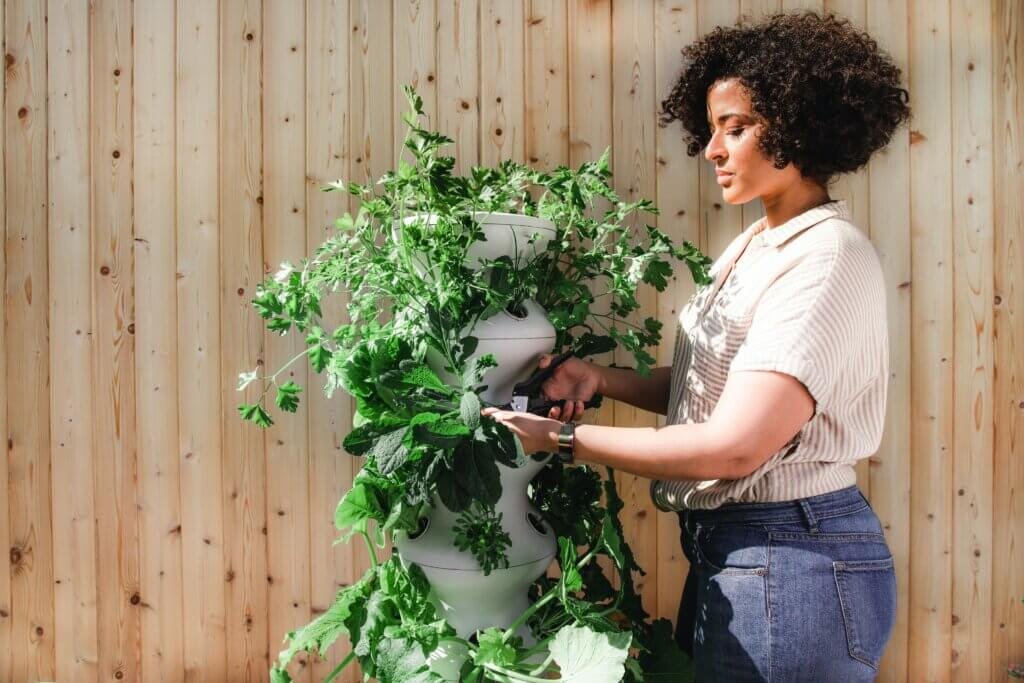
Direct Sowing Seeds
Select Appropriate Seeds for Direct Sowing
Direct sowing involves planting seeds directly into the ground where they will grow. It’s important to select appropriate seeds for direct sowing, as some vegetables prefer to be directly planted rather than started indoors. Examples of vegetables commonly direct sown include beans, carrots, radishes, and lettuce. When choosing seeds for direct sowing, consider the specific growing conditions required by each vegetable, such as soil temperature and frost tolerance.
Prepare the Sowing Area
Before sowing your seeds directly into the ground, it’s important to prepare the sowing area properly. Start by removing any weeds or grass from the area and loosening the soil with a garden fork or tiller. Rake the soil to create a smooth and level surface, removing any rocks or debris that may hinder the growth of your seeds. It’s also a good idea to incorporate some compost or organic matter into the soil to improve its fertility and moisture retention.
Properly Space and Plant Seeds
When direct sowing seeds, it’s important to follow the recommended spacing for each vegetable. Crowding your plants can lead to poor growth, decreased yield, and increased susceptibility to diseases and pests. Consult the seed packet or gardening resources for specific information on spacing requirements. Plant the seeds at the appropriate depth, typically 2-3 times the diameter of the seed. Gently pat down the soil around the seeds to ensure good soil-to-seed contact.
Water and Mulch the Sown Seeds
Proper watering is essential after sowing seeds directly into the ground. Use a gentle spray attachment on a watering can or hose to moisten the soil without disturbing the seeds. Avoid overwatering, as this can lead to seed rot or wash away the seeds. Once the seeds are watered, consider applying a layer of organic mulch, such as straw or wood chips, to help conserve moisture, suppress weeds, and moderate soil temperature. Mulching also helps prevent soil erosion and adds organic matter to the soil as it breaks down.
Caring for Seedlings
Watering Seedlings
Watering seedlings is crucial for their healthy development. Seedlings have delicate root systems that need consistent moisture to thrive. Water your seedlings regularly, keeping the soil consistently moist but not waterlogged. Avoid overhead watering, as this can lead to damping-off disease and other fungal issues. Instead, water at the base of the plants to ensure that the water reaches the root zone. Mulching around the seedlings can also help retain moisture and reduce the frequency of watering.
Providing Sufficient Sunlight
Just like mature plants, seedlings need sufficient sunlight to grow properly. Place your seedlings in a location that receives at least 6-8 hours of sunlight per day. If you don’t have enough natural sunlight, consider supplementing with artificial grow lights. Position the lights approximately 4-6 inches above the seedlings and adjust their height as the plants grow. Keep in mind that the intensity and duration of light exposure may vary depending on the specific light requirements of the vegetable.
Fertilizing Seedlings
To ensure that your seedlings have adequate nutrients for healthy growth, it’s important to fertilize them. Start by using a balanced organic fertilizer at half the recommended strength once the seedlings have developed their first true leaves. Gradually increase the strength and frequency of fertilization as the seedlings grow. Avoid over-fertilizing, as this can lead to nutrient imbalances and the risk of burning the delicate roots. Always follow the instructions on the fertilizer packaging for proper application rates.
Protecting Seedlings from Pests and Diseases
Seedlings are particularly vulnerable to pests and diseases, so it’s important to take measures to protect them. Monitor your seedlings regularly for signs of damage or infestation, such as chewed leaves or wilting. Use physical barriers like row covers or netting to prevent pests from accessing your plants. Introduce beneficial insects, such as ladybugs or lacewings, which can help control common garden pests. If necessary, apply organic insecticides or fungicides following the instructions on the product label. Proper hygiene, such as cleaning tools and removing diseased plants, can also help prevent the spread of diseases.
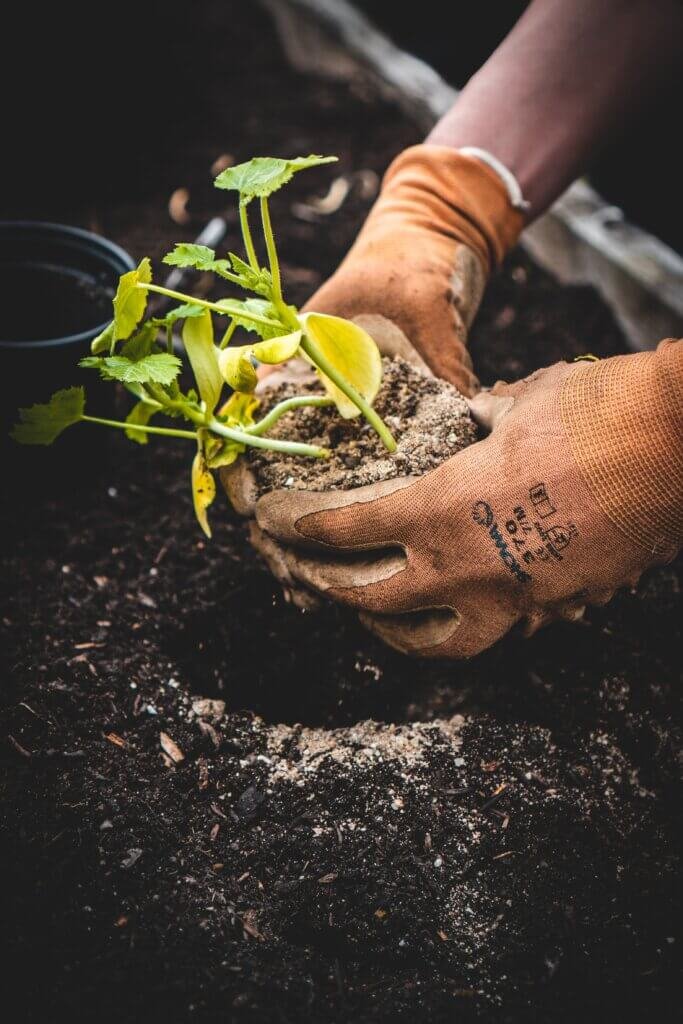
Regular Watering and Deep Watering
Establish a Watering Schedule
Establishing a regular watering schedule is crucial for the health and productivity of your vegetable garden. In general, vegetable plants require about 1 inch of water per week, either from rainfall or irrigation. However, the water needs may vary depending on factors like temperature, soil type, and plant maturity. Keep track of rainfall using a rain gauge and supplement with irrigation as needed. It’s important to water deeply, allowing the water to penetrate the root zone rather than just wetting the soil surface.
Avoid Overwatering
While it’s important to provide adequate water to your plants, it’s equally important to avoid overwatering. Overwatering can lead to several problems, including root rot, fungal diseases, and nutrient leaching. Before watering, check the soil moisture by sticking your finger about an inch into the soil. If it feels moist, hold off on watering for another day or two. Additionally, make sure the soil has good drainage to prevent water from pooling around the roots.
Deep Watering Techniques
Deep watering encourages deeper root growth, which helps plants withstand dry periods and promotes overall plant health. The best way to achieve deep watering is to water slowly and deeply, allowing the water to permeate the root zone. Soaker hoses or drip irrigation systems are excellent tools for achieving deep watering. Place them at the base of the plants and run the water for an extended period, ensuring that the soil is thoroughly saturated. This method minimizes water loss through evaporation and promotes better water absorption by the plants.
Mulching for Water Conservation
Mulching is a simple yet effective technique for conserving water in your vegetable garden. Apply a layer of organic mulch, such as straw, wood chips, or shredded leaves, around your plants. The mulch acts as a protective barrier, reducing water evaporation from the soil surface and helping to maintain soil moisture. Mulching also helps suppress weeds, regulate soil temperature, and improve soil structure over time as the organic matter breaks down. Ensure that the mulch is applied evenly and that it doesn’t directly touch the stems or leaves of your plants.
Implementing Proper Crop Rotation
Understand the Importance of Crop Rotation
Crop rotation is a technique that involves systematically changing the planting location of different vegetable families each growing season. This practice helps prevent the buildup of pests, diseases, and nutrient imbalances, leading to healthier plants and higher yields. Different vegetable families have varying nutrient requirements and are susceptible to different pests and diseases. By rotating crops, you disrupt the life cycles of pests and diseases and improve overall soil health.
Plan Crop Rotation Scheme
To implement an effective crop rotation scheme, it’s important to plan your planting sequence in advance. Divide your vegetable garden into sections and assign each section to a specific vegetable family. Rotate the families to a different section each year, ensuring that each family has a gap of at least three years before returning to the same section. Consider grouping vegetables from the same family together to make rotation easier. Keep a journal or map to track your planting history and help plan future rotations.
Follow a Crop Rotation Schedule
Following a crop rotation schedule is crucial to maximize its benefits. Stick to your planned rotation sequence and avoid planting vegetables from the same family in the same section for consecutive years. By adhering to the rotation schedule, you reduce the likelihood of pest and disease buildup, improve soil fertility, and maintain a balanced ecosystem in your garden. As you gain experience, fine-tune your schedule based on your observations and the specific needs of your crops.
Consider Cover Crops
Cover crops are plants grown specifically to improve soil health between vegetable growing seasons. Consider incorporating cover crops into your crop rotation plan. Cover crops, such as clover, rye, or legumes, help control soil erosion, suppress weeds, fix nitrogen, and add organic matter to the soil when tilled under. Select cover crops based on your specific garden’s needs and consult resources or local extension offices for guidance on the best cover crops for your region.
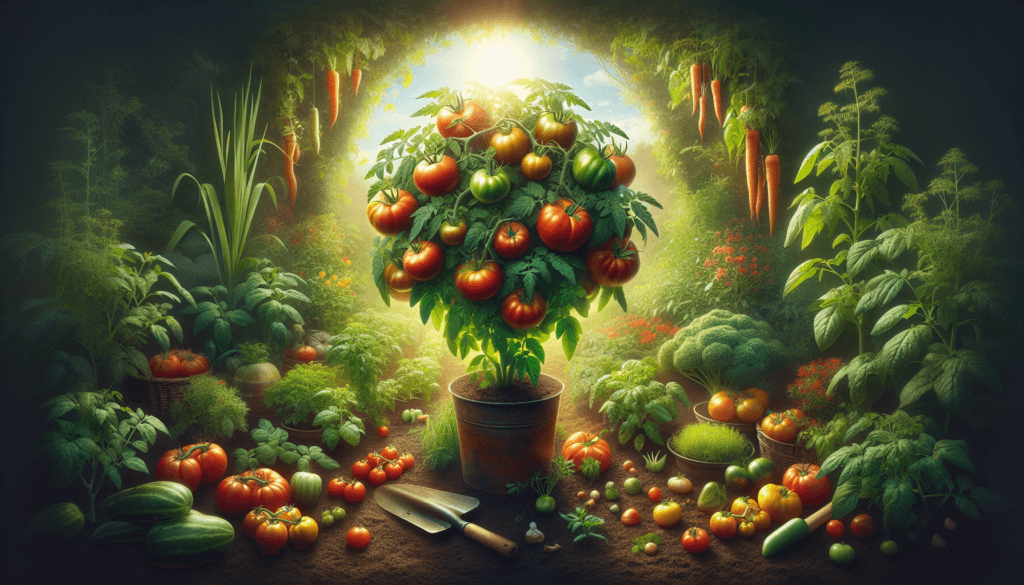
Controlling Weeds and Pests
Identify Common Garden Weeds
Managing weeds is an ongoing task in any vegetable garden. It’s important to be able to identify common garden weeds to effectively control their spread. Weeds compete with your vegetable plants for nutrients, water, and sunlight, and can harbor pests and diseases. By identifying weeds early and removing them promptly, you can prevent them from taking over your garden. Educate yourself about common weeds in your region and their characteristics, and use appropriate control methods to keep them in check.
Utilize Natural Weed Control Methods
When it comes to controlling weeds, there are several natural and environmentally friendly methods you can use. Hand pulling or hoeing can be effective for removing small weeds, especially when done regularly. Mulching with organic materials helps smother weeds by blocking their access to sunlight. Additionally, applying corn gluten meal as a pre-emergent weed control can inhibit weed seed germination. Utilizing landscape fabric or cardboard as a weed barrier in walkways or between planting beds can also help reduce weed growth.
Implement Integrated Pest Management
Integrated pest management (IPM) is a holistic approach to pest control that focuses on prevention, monitoring, and intervention. IPM involves identifying and monitoring pest populations, implementing cultural practices to minimize their impact, and using least-toxic control methods when necessary. This may include handpicking pests, using insecticidal soaps or oils, attracting beneficial insects, and practicing crop rotation. By implementing IPM, you can reduce the reliance on chemical pesticides and create a healthier and more sustainable garden ecosystem.
Encourage Beneficial Insects
Beneficial insects play an important role in controlling garden pests naturally. Many insects, such as ladybugs, lacewings, and parasitic wasps, are natural predators of common garden pests like aphids, caterpillars, and mites. By creating a garden environment that attracts and supports beneficial insects, you can reduce the need for chemical pest control methods. Planting nectar-rich flowers, such as marigolds, lavender, or sunflowers, and providing habitat structures like insect hotels or birdhouses can help attract and sustain beneficial insect populations.
Continuous Learning and Improvement
Attend Gardening Workshops or Classes
Gardening is a lifelong learning experience, and attending workshops or classes can expand your knowledge and improve your gardening skills. Local nurseries, gardening organizations, and community centers often offer gardening workshops or classes on various topics, from basic gardening techniques to specific vegetable cultivation. These educational opportunities provide valuable insights, practical tips, and the opportunity to connect with experienced gardeners who can share their expertise.
Read Gardening Books and Online Resources
Endless resources are available for aspiring and experienced gardeners alike in the form of books and online platforms. Gardening books offer in-depth information on specific topics, such as vegetable gardening, organic practices, or pest management. Online resources, such as gardening blogs, forums, and university extension websites, provide a wealth of information and allow you to connect with fellow gardeners from around the world. Continuously expanding your knowledge through reading and research will keep you informed about new techniques, varieties, and best practices.
Experiment with New Techniques and Varieties
Gardening is an art as well as a science, and it’s important to experiment with new techniques and vegetable varieties to keep your garden exciting and productive. Try growing vegetables you’ve never grown before, switch up your planting methods, or explore different companion planting combinations. Experimenting allows you to learn from firsthand experience, discover what works best for your specific garden and growing conditions, and keep your enthusiasm for gardening alive.
Document and Evaluate Your Garden’s Performance
Keeping track of your garden’s performance is key to continuous improvement. Maintain a garden journal or notebook to record important information, such as planting dates, varieties grown, weather conditions, and any observations or findings. This documentation will help you identify patterns, evaluate the success of different techniques or varieties, and make informed decisions for future gardening seasons. By actively monitoring and reviewing your garden’s performance, you can make adjustments and improvements for greater success in the future.
In conclusion, growing a successful DIY vegetable garden requires careful planning, proper soil preparation, and regular maintenance. By choosing the right location, planning the garden layout, preparing the soil, starting seeds indoors or direct sowing, and following proper care practices, you can create a thriving and bountiful garden. Remember to continuously learn and improve by attending workshops, reading gardening resources, experimenting with new techniques and varieties, and documenting your garden’s performance. With dedication and a little bit of patience, you’ll be rewarded with a garden full of fresh and healthy vegetables to enjoy. Happy gardening!


